Author: Jake Huolihan
Despite recent stylistic trends, beer clarity has been a goal for much of modern brewing history and, for the most part, continues to be associated with good brewing practices and a quality finished product. Unfortunately, achieving bright beer can require a decent amount of time, which is why some brewers rely on external assistance from things like mechanical filters and chemicals that encourage the precipitation of haze-causing particles.
One chemical that can be used to improve beer clarity is gelatin, a form of collagen that, when incorporated into beer, possesses a positive charge that attracts negatively charged protein particles and drops them out of solution, thus reducing haze. While less popular in commercial breweries these days due to it being non-vegetarian, many have experienced the rapid clarifying powers of gelatin, though despite evidence to the contrary, some are wholly convinced its use negatively impacts beer quality.
I don’t use finings too often these days, not because I’m concerned about how they’ll affect my beer, but rather nearly everything I brew is an xBmt and I prefer avoiding predictable complaints. Over the last couple years, kveik has grown massively in popularity, and I’ve noticed many beers fermented with it, regardless of strain, end up being quite hazy. Curious as to how fining with gelatin would impact a beer fermented with a popular kveik strain, I decided to test this one out again.
| PURPOSE |
To evaluate the differences between beers fermented with a common kveik strain where one was fined with gelatin and the other was not fined at all.
| METHODS |
With the goal of making sure any differences caused by the variable were on display, I designed simple recipe that was inspired by German Pils but fermented with the popular Voss kveik strain.
Alternatives Exclude
Recipe Details
| Batch Size | Boil Time | IBU | SRM | Est. OG | Est. FG | ABV |
|---|---|---|---|---|---|---|
| 5.2 gal | 30 min | 38.2 IBUs | 4.0 SRM | 1.052 | 1.011 | 5.4 % |
| Actuals | 1.052 | 1.019 | 4.4 % | |||
Fermentables
| Name | Amount | % |
|---|---|---|
| Odyssey Pilsner | 11.5 lbs | 95.83 |
| Munich I (Weyermann) | 8 oz | 4.17 |
Hops
| Name | Amount | Time | Use | Form | Alpha % |
|---|---|---|---|---|---|
| Hallertau Magnum | 23 g | 30 min | Boil | Pellet | 14 |
| Tettnang | 30 g | 15 min | Boil | Pellet | 4.5 |
| Tettnang | 30 g | 5 min | Boil | Pellet | 4.5 |
Yeast
| Name | Lab | Attenuation | Temperature |
|---|---|---|---|
| Loki (A43) | Imperial Yeast | 80% | 65°F - 100°F |
Notes
| Water Profile: Ca 61 | Mg 0 | Na 8 | SO4 75 | Cl 55 |
Download
| Download this recipe's BeerXML file |
After collecting the water, adjusting it to my desired profile, and turning on the element to heat it up, I weighed out and milled the grains.
With the water adequately heated, I stirred in the grist then checked the mash temperature.
I let the mash rest for 60 minutes, stirring intermittently.
During the mash rest, I weighed out the kettle hop additions.
When the mash was complete, I lautered and collected the sweet wort in my kettle.
I then boiled the wort for 30 minutes, adding hops at the times stated in the recipe.
When the boil was complete, I quickly chilled the wort with my immersion chiller.
A refractometer reading showed the wort was right at the expected OG.
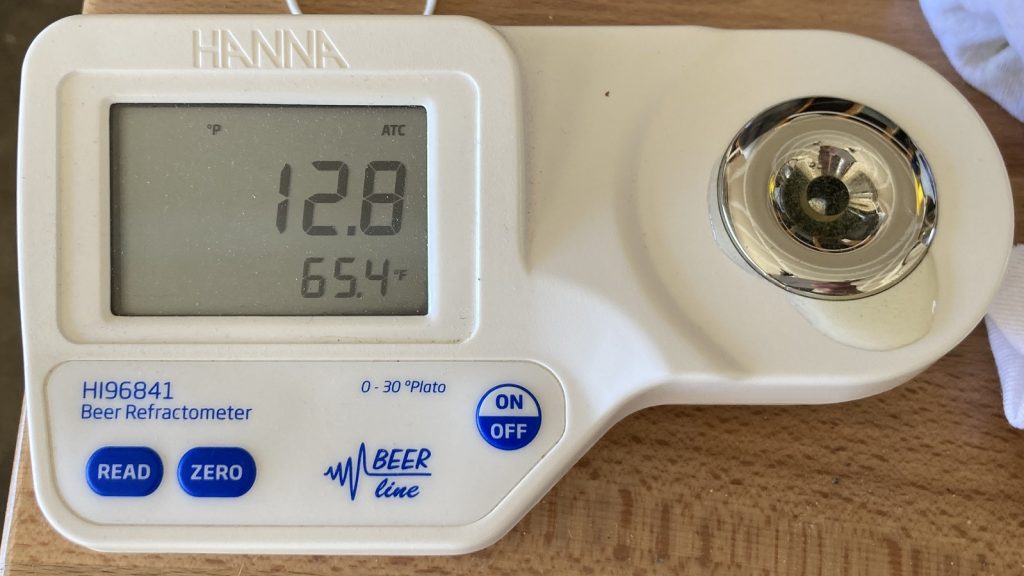
The wort was than equally split between two sanitized Ss Brewtech Brew Buckets.
The fermenters were connected to my glycol system and left to finish chilling to my desired fermentation temperature of 72°F/22°C before I pitched a pouch of Imperial Yeast A44 Loki into each.
With active signs of fermentation complete after a week, I took hydrometer measurements confirming the beers had reached the same FG, which was a bit higher than expected.
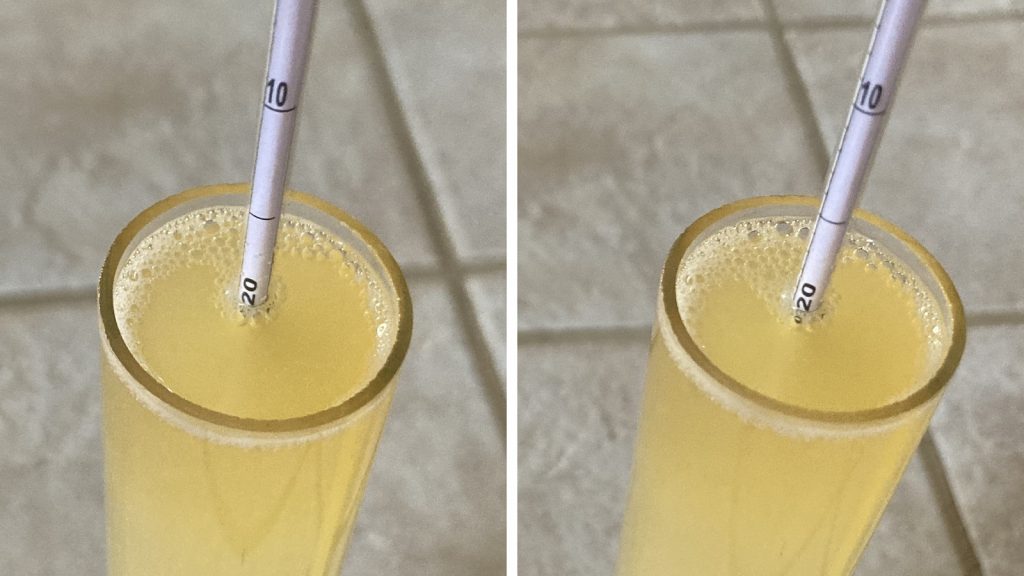
At this point, I set my glycol chiller to cold-crash the beers to 34°F/1°C and returned the following day to add gelatin fining to one batch.
The beers were left alone for another 24 hours before I pressure transferred them to sanitized and CO2 purged kegs. The filled kegs were placed in my keezer and burst carbonated overnight before I reduced the gas to serving pressure. After a few more days of conditioning, the beers were ready for evaluation.
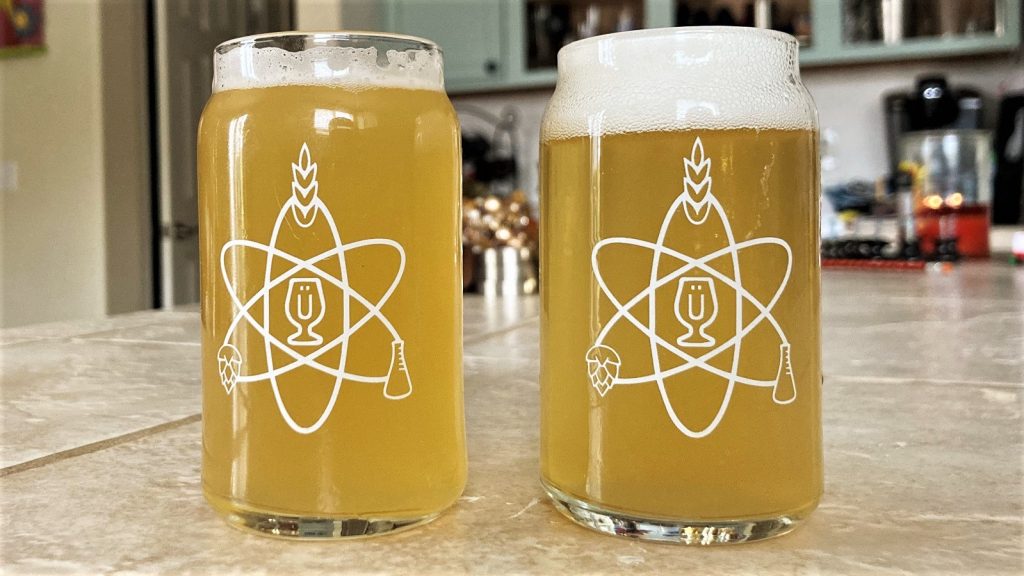
| RESULTS |
Due to social distancing practices as a result of the COVID-19 pandemic, data for this xBmt was unable to be collected in our typical manner. As such, temporary adaptations were made involving the author completing multiple semi-blind triangle tests in as unbiased a way as possible.
Utilizing 4 opaque cups of the same color where 2 were inconspicuously marked, one set was filled with the beer fined with gelatin while the other set was filled with the non-fined beer. For each triangle test, 3 of the 4 cups were indiscriminately selected, thus randomizing which beer was the unique sample for each trial. Following each attempt, I noted whether I was correct in identifying the unique sample. Out of the 10 semi-blind triangle tests I completed, I needed to identify the unique sample 7 times (p<0.05) in order to reach statistical significance, though I did so just 2 times (p=0.90), indicating my inability to reliably distinguish a kveik fermented beer that was fined with gelatin from one that was not fined at all.
I was surprisingly pleased with how these beers turned out, as I hadn’t enjoyed a Kveik fermented beer prior to this. Despite being fermented so warm with a unique ale yeast, these beers had a noticeable lager-like character that made for very easy drinking. I won’t be using Kveik too often, but I definitely plan to keep some on-hand to use when I need to turn a batch around quickly.
| DISCUSSION |
Save for the rare few styles that are expected to come with a noticeable haze, clarity is an aspect of beer many view as being a sign of both good brewing practice and a quality finished product. To avoid the costs and complication involved with running beer through a mechanical filtration system, many brewers resort to chemical fining alternatives such as gelatin, which critics purport has a deleterious effect. The fact I was unable to distinguish a kveik fermented beer that was fined with gelatin from one that was not fined not only contradicts these claims, but supports the results of past xBmts on gelatin fining as well as the anecdotal reports of many brewers.
Indeed, these results add more to the pile of evidence suggesting gelatin fining has minimal perceptible impact on beer, but the primary purpose for its use is clarity, and in this particular case it seemed to have minimal impact. Despite claims that gelatin is less effective at removing yeast from beer, it seems possible the uniqueness of the particular Kveik strain used in this xBmt played some role. Then again, a similar thing was observed in a past xBmt looking at the impact gelatin fining has on NEIPA, even though it was fermented with a more common English yeast.
I admittedly went into this xBmt with a couple expectations, one, that fining with gelatin would result in a clear beer, and two, that it wouldn’t have a perceptible impact, both based on my history of using gelatin. While the fined beer was ever-so-slightly clearer, the gelatin had nowhere near the effect I’ve previously experience, which surprised me. Either way, considering how inexpensive gelatin is along with the fact I couldn’t tell the beers apart, I’ll continue viewing it as “powdered time” and using it my brewery.
If you have any thoughts about this xBmt, please do not hesitate to share in the comments section below!
Support Brülosophy In Style!
All designs are available in various colors and sizes on Amazon!
Follow Brülosophy on:
FACEBOOK | TWITTER | INSTAGRAM
If you enjoy this stuff and feel compelled to support Brulosophy.com, please check out the Support page for details on how you can very easily do so. Thanks!


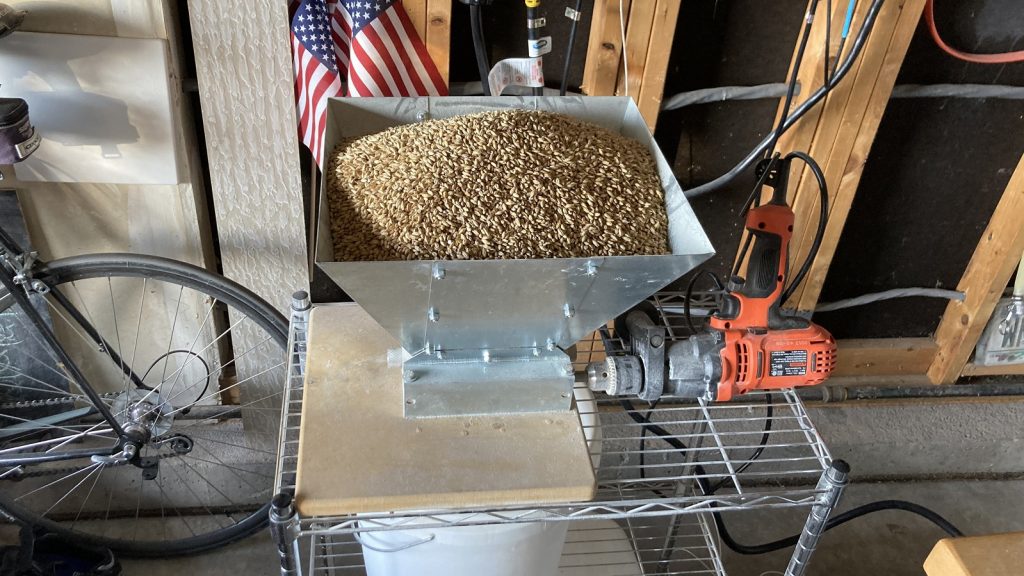
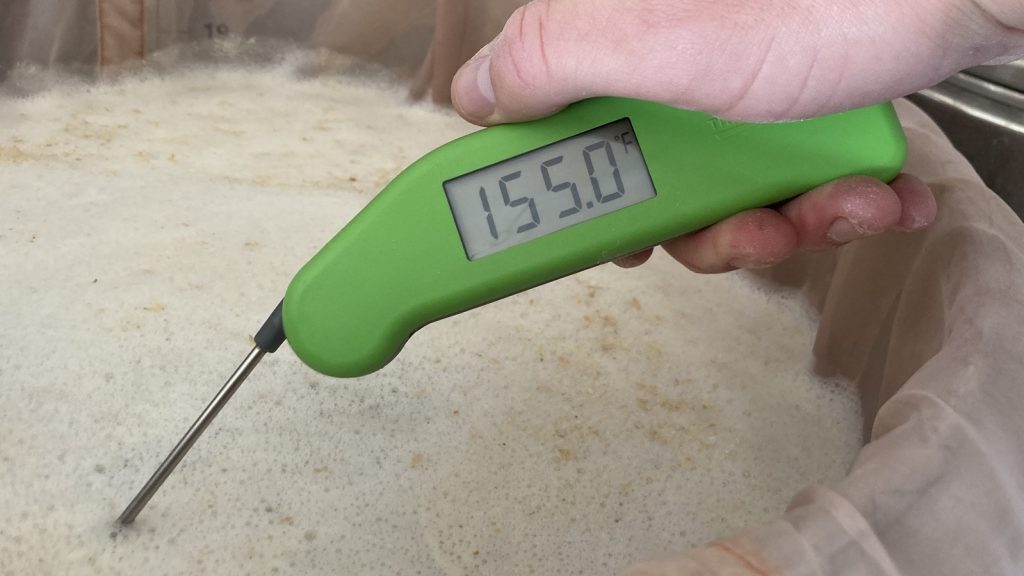
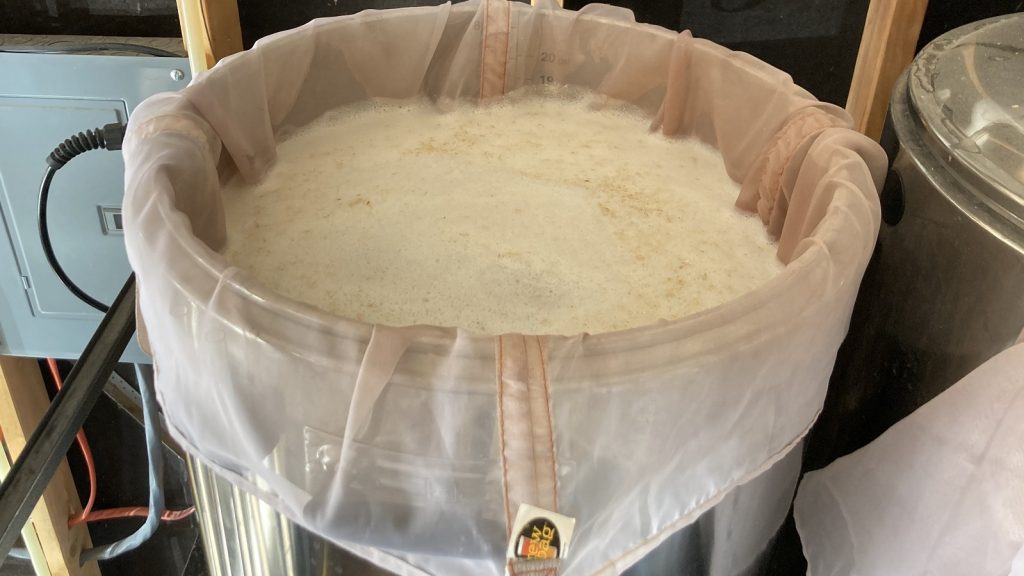

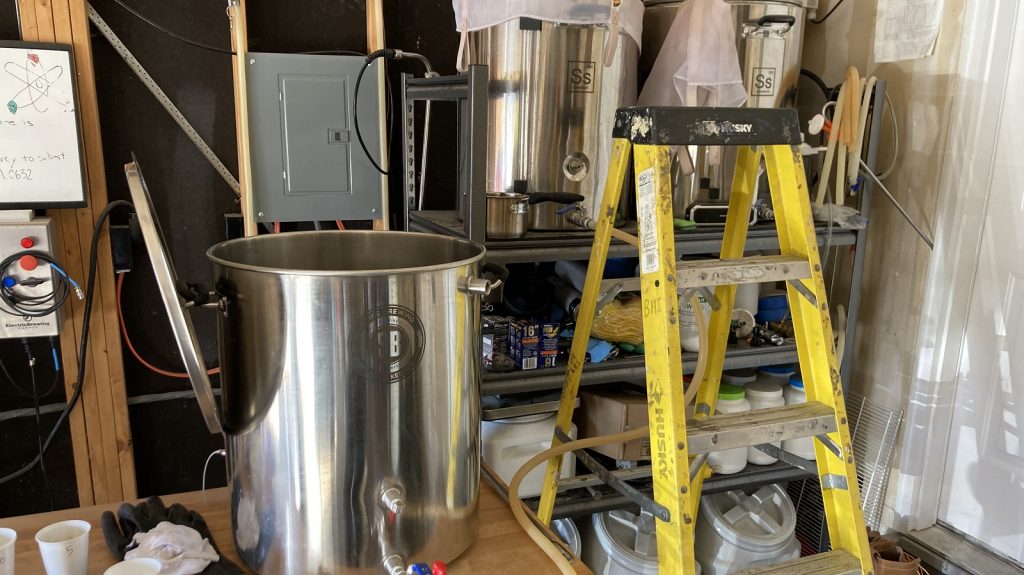
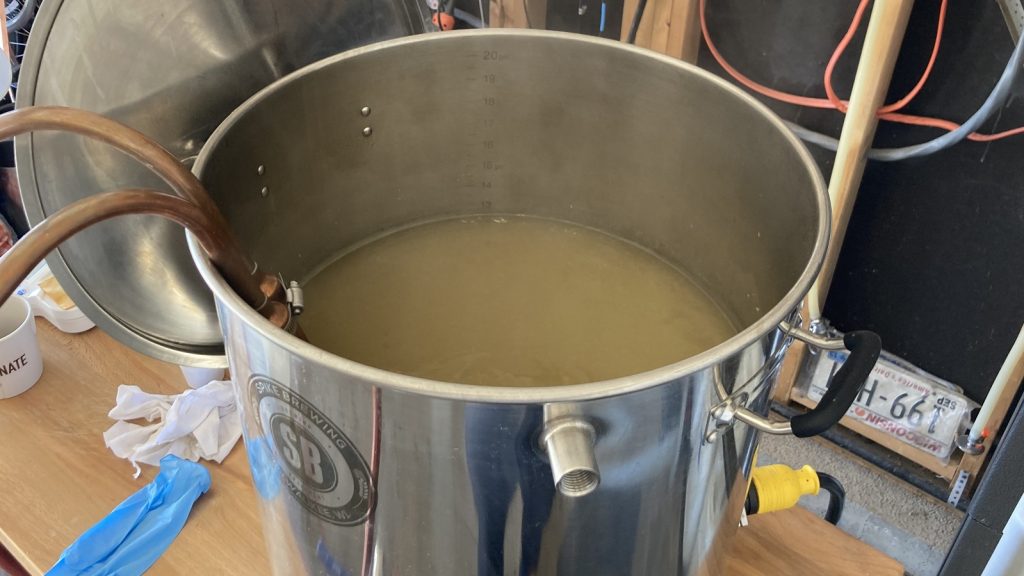
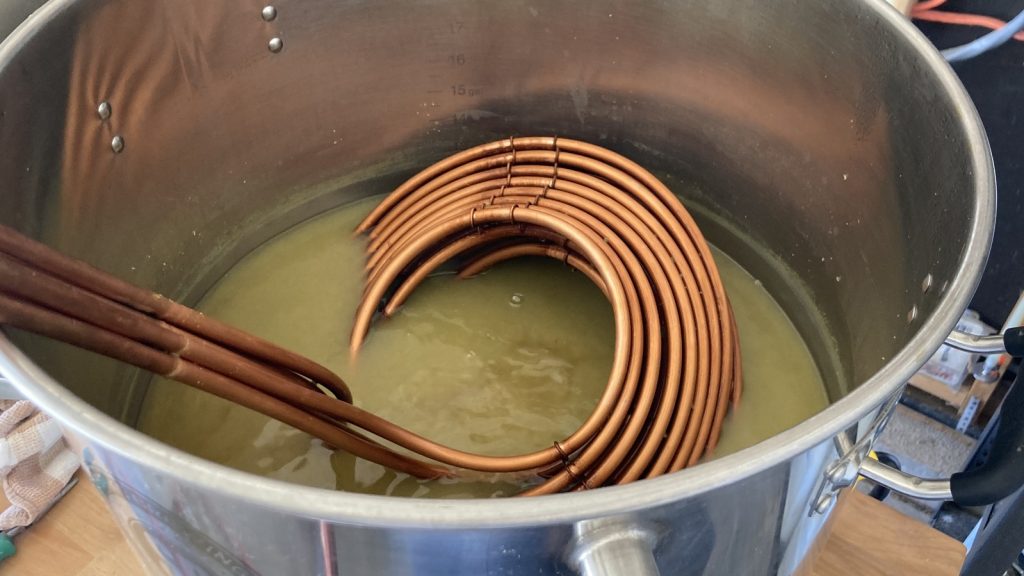

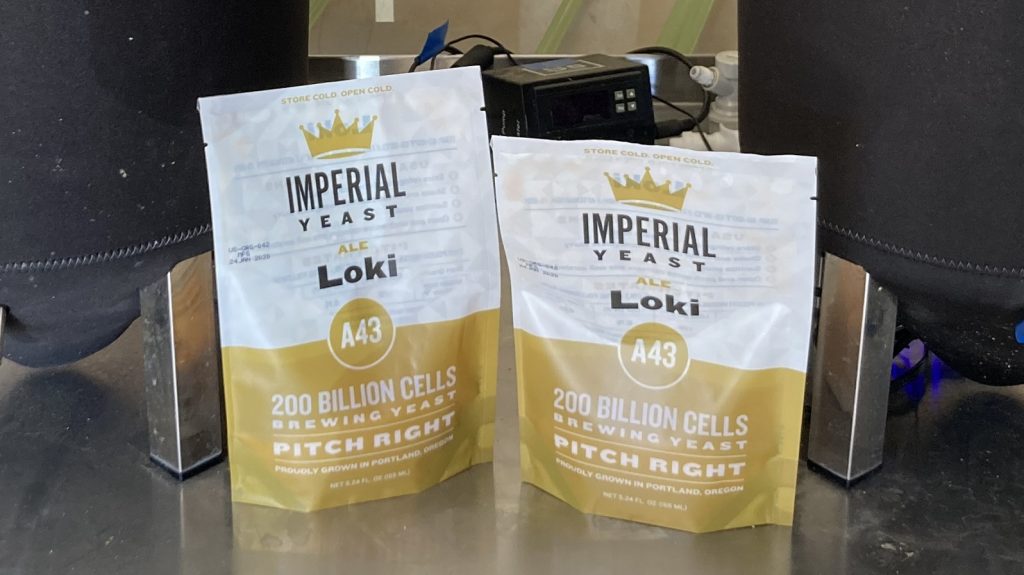
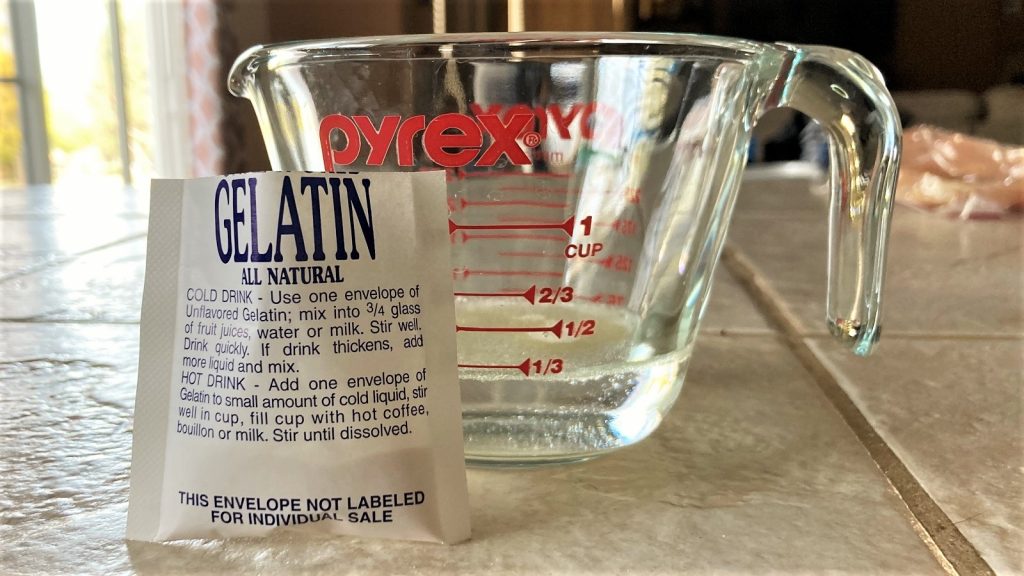











22 thoughts on “exBEERiment | The Gelatin Effect: Impact Of Fining A Beer Fermented With Kveik (Voss)”
Maybe it is just the lighting but the picture on the right with the gelatin appears to be clearer.
From the xbmt: “While the fined beer was ever-so-slightly clearer, the gelatin had nowhere near the effect I’ve previously experience, which surprised me.”
Hi, I find your articles very interesting, where do I subscribe to your RSS? wouldn’t want to miss any news
Please check out my website stable ales
What’s the 4th port in your lids? I see 2 are glycol and 1 is blow off.
The last one would be a thermowell
We always employ gelatin. After about 3 days, the beer is always brilliantly clear. No impact on flavor.
That’s my experience as well. I wait 3 to 4 days and thump the fermenters on the second day to knock anything off the sides. I just transferred a Scottish Export into the kegs and it is brilliantly clear.
Not that this is a factor, but just curious on the preparation of gelatin solution – How much gelatin (g or tbsp) in how much water (temp)? Perhaps the amount of time the beer spent on gelatin before evaluation is the culprit here for no difference in clarity? How did the two beers look after a week/two of conditioning? Unless it is something that I am doing inherently wrong, I usually don’t get crystal clear beer from gelatin fining until at least 10-14 days after treatment when storing at 34-36F.
Regardless, another instance of liquid time having no ill-effects on beer. Nice XBMT.
I used 1/4 cup water and 1/2 tsp gelatin dissolved and then heated up for about 25 seconds to get to roughly 150 F and well dissolved. When gelatin works well I find it’s usually crystal clear with minimal time, talking couple days max, when it doesn’t work well I often wonder if yeast load in the finished beer is simply too high for the amount of finning used.
Skare kveik is my house “pilsner” yeast now. Roughly a dozen batches so far. I ferment at 55f and achieve the same clarity as I did with any other lager yeast. It’s still done fermenting in 5 to 7 days and clears with a couple of weeks in the keg. I’ve never had a “warm fermented” kveik get clear. Ever. I wonder what the hell could cause that?
I’ve done identical batches with Skare and WLP830. The only difference I could detect was a tad more hop bite on the back of the tongue that I found preferable to the lager yeast in a German pils. I had to concentrate to notice it.
comment
What do you do to reduce oxygen when cold crashing in the brew buckets?
Search this site for “Bruloon.”
I just did an oktoberfeist with Voss fermented at 90°f and could not get it to clear at all
I’m from the UK. I notice you don’t use a secondary fermentation in the serving vessel, as in cask conditioned English ale (metal casks these days rather than wooden), but rather a direct carbonation by pressure into kegs. No doubt, your intended pressure is much higher than typical for English ale. I use a secondary fermentation in bottle for my bottled ales. Is there such a thing as American cask conditioned ale or bottle conditioned ale or does it mostly get carbonated by direct pressure?
Love these exbeeriments! The only Voss Kweik beer I made that I thought was as good as one fermented with a conventional ale or lager yeast sat in the keg many weeks. By then it was clear and delicious. Before that it had that yucky yeast taste (YYT) that I really cannot stand, but, in my experience, goes away much more quickly with regular yeasts. I am curious if others have noticed the same thing.
Hi Jake. Did the two beers became more distinctively different in clarity as they sat in kegs? I haven’t used kveik but have noticed many others and they all seems to have residual haze. Just wondered if longer cold aging helped. Thanks.
The one fined with gelatin maintained more clarity, still neither what I’d call clear.
How would gelatin coming affect beer that is to be bottle conditioned, ie will enough yeast be left to ferment for carbonation?
I’ve never done it but anecdotally it’s fine
With an og of 1.052 and FG of 1019, I can’t help but think you did an overpitch with Loki, you only need 50B cells or less for 19L at 1.052, I think. Perhaps that’s why the yeast stopped at 1.019. I pitch a 1/2 quart of slurry in 1bbl of wort,at about 1.060, fermented at 68-75F, finished in 5 days or so at 1.010 or less, we wait up to 10 days then package (keg),cold crash and add gelatin…crystal clear in 24 hours. Very interesting results in your exbeeriment. I have done overpitch with Voss with a 1.045 Helles, and it still finished at 1.010…scratching my head over this one,Jake.
Hey there,
as a vegetarian I am maybe biased, I’ll be honest.
But I don’t get the fuss about cristal clear beer. Here in Germany many breweries advertise their beer as “naturtrüb” which means naturally hazy. It is to show quality and stands for a natural process without any (often chemical) additives which the breweries are proud of. Also a lot of pressed juices do that.
The big breweries around the world use Polyvinylpolypyrrolidon (PVPP) – plastic – to get the desired cristal look and don’t even have to declare that they use it. I find that shocking.
For me 100% the flavour is the most important thing. Haze or no haze, is it tasty or not?
Nevertheless, here you can see my level of clarity without any gelatin when brewing a hoppy Pale Ale with 4g/L dry hopping. All I did was use Irish Moss during the boil and cold crashed for 48h. One is the original Störtebecker Atlantik Ale and one is my clone with the added dry hopping.
https://ibb.co/3WbQfVd
https://ibb.co/t2YXH1q
Regards from Germany and thanks for the great content!!
Phillip